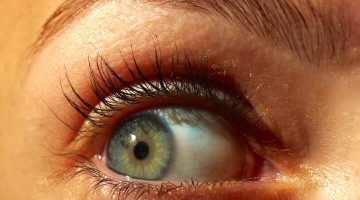Glaucoma is a condition of damaged optic nerve that disturbs your visual sense. Though it’s hard to recover from this condition completely but some treatments and drugs for glaucoma like Careprost eye drops can provide an effective treatment.
Our eyes are one of the most sensitive parts of the body and perhaps the most precious blessing of God. The proper protection of eyes is very important to maintain a good visual. Even though you take precautions to protect eyes, they may get hurt by any internal or external factors, making the condition more critical. Glaucoma is one such condition that has the potential to cause vision loss. Glaucoma’s treatment in its early stage is very crucial to saving your vision. Depending on the severity of the condition, you can take up any of the medication options including eye drops like Careprost, oral medications, surgery, laser treatment and natural remedies.
Let’s discuss those treatment options of glaucoma that are often prescribed.
Application of eye drops:
Eye drops are the very first treatment option of glaucoma that can decrease its effects. The specific eye drops help you lower the eye pressure by improving the drainage of eye fluid, so it doesn’t damage the optic nerves.
There are some highly recommended eye drops that ophthalmologists probably prescribe, such as:
- Prostaglandins
Prostaglandins help to increase the flow of eye fluid in order to reduce pressure so that optic nerves are not hurt. Some medications like latanoprost (Xalatan), Careprost eye drops and bimatoprost have these elements. There may be some temporary side effects of prostaglandins like darkening of the iris, mild reddening in the eyes, blurred vision, and changes in the color of eyelid skin.
- Carbonic anhydrase inhibitors
Such inhibitors are rarely prescribed but they can reduce the production of eye fluid. Dorzolamide (Trusopt) and brinzolamide (Azopt) are popular examples of carbonic anhydrase inhibitors. You may experience some effects like tingling in the fingers, feeling of frequent urination, nausea, and metallic taste.
- Beta blockers
The main work of beta blockers is to reduce the production of eye fluid that would subsequently lower the intraocular pressure. Timolol (Betimol, Timoptic), Levobunolol (Betagan), Betaxolol (Betoptic), Metipranolol (OptiPranolol), and Carteolol (Ocupress) are popularly used to reduce eye pressure. Some of their possible side effects are lower blood pressure, fatigue, breathing difficulty, low heart rate and impotence.
- Alpha-adrenergic agonists
Brimonidine (Alphagan), Epinephrine (Glaucon and Epifrin), Dipivefrin (Propine), and Apraclonidine (Iopidine) are frequently prescribed alpha-adrenergic agonists that can reduce the production of aqueous humor to treat glaucoma. These medication agents can also help you increase the outflow of eye fluid to reduce internal eye pressure. Possible side effects of these eye drops are an irregular heart rate, fatigue, swollen eyes, high blood pressure, fatigue and dry mouth.
- Cholinergic agents
These agents are also helpful to increase drainage of eye fluids. Pilocarpine (Isopto Carpine) is a good example of cholinergic agents. The possible side effects of these agents include smaller pupils, nearsightedness, and blurred vision.
Here, it is important to understand that any of the eye drops are not 100% effective to reduce eye pressure and possible side effects could also vary person to person. Usually, your doctor prescribes an eye drop medication based on the intensity of glaucoma symptoms.
Oral medications:
Oral medications are another option used to treat glaucoma. Carbonic anhydrase inhibitors like Acetazolamide (Diamox) and Methazolamide (Neptazane) are prescribed to take orally. Some possible side effects of the oral medications include stomach upheaval, frequent urination, depression, tingling in the fingers and toes, and kidney stones.
Laser Treatment:
Laser treatment is the latest and effective treatment of glaucoma that helps you regain the vision. Laser trabeculoplasty is administered to treat open-angle glaucoma. It helps to open the clogged channels in the trabecular meshwork, ensuring uninterrupted drainage of eye fluid. It can be applied as a primary treatment to lower eye pressure.
The frequently used laser treatments for glaucoma include argon laser trabeculoplasty (ALT) and selective laser trabeculoplasty (SLT) and MicroPulse laser trabeculoplasty (MLT). All these laser therapies can increase eye fluid to reduce pressure.
Glaucoma surgery:
Eye surgery (trabeculectomy) is performed to create an opening in the sclera and remove trabecular meshwork and suture the flap. You can take surgery along with Careprost eye drops and some oral medications as suggested by your doctor. Normally, this surgery procedure requires patients for a one-night stay in the hospital. Surgery performed one eye at a time, usually at an interval of four to six weeks. Glaucoma surgery is often carried out after assessing several aspects of glaucoma, such as:
- Severity of glaucoma
- Response to eye drops and oral medications
- Trabeculectomy
- History of other health issues












